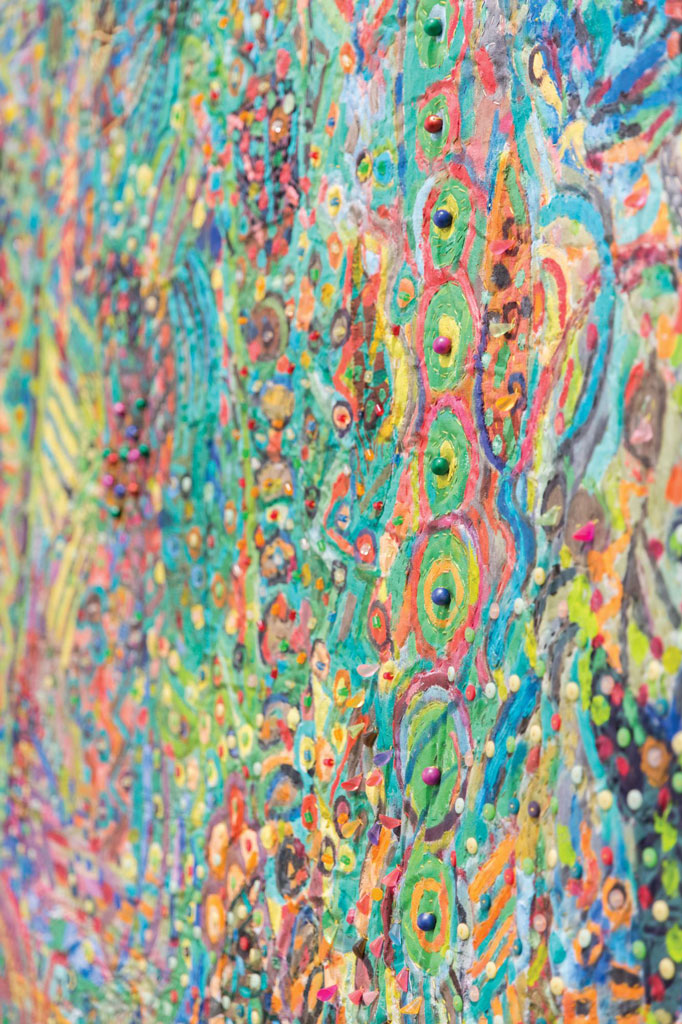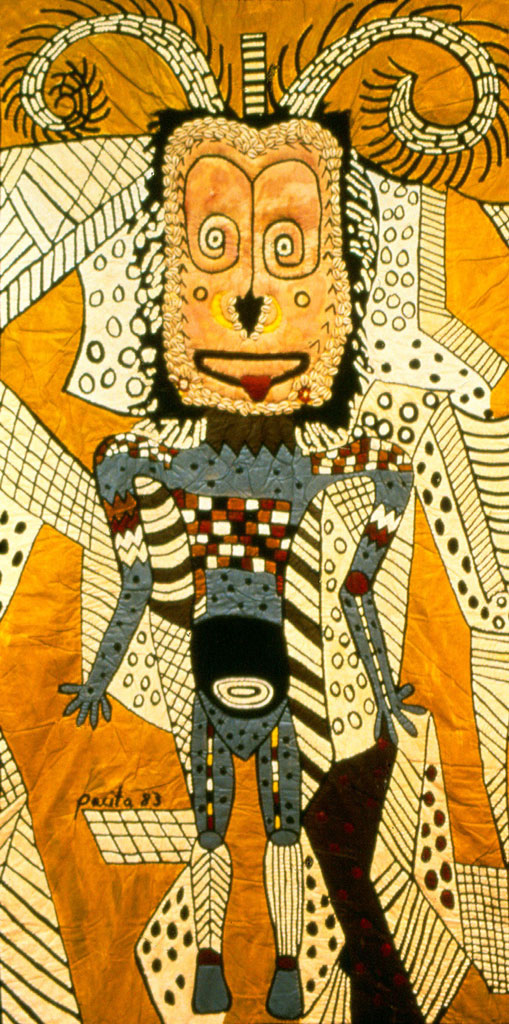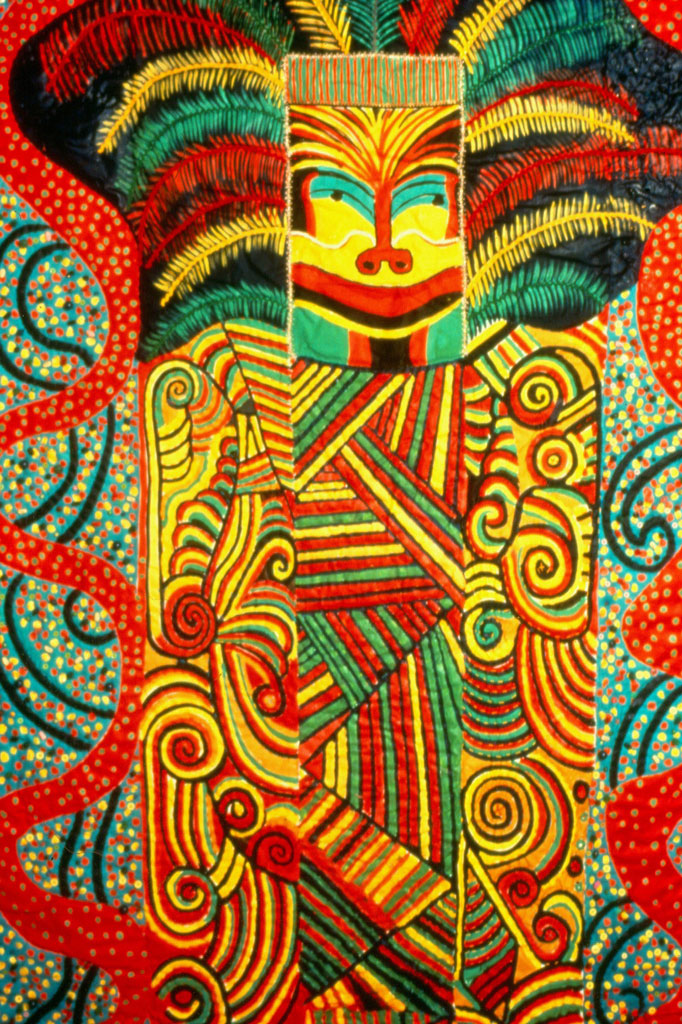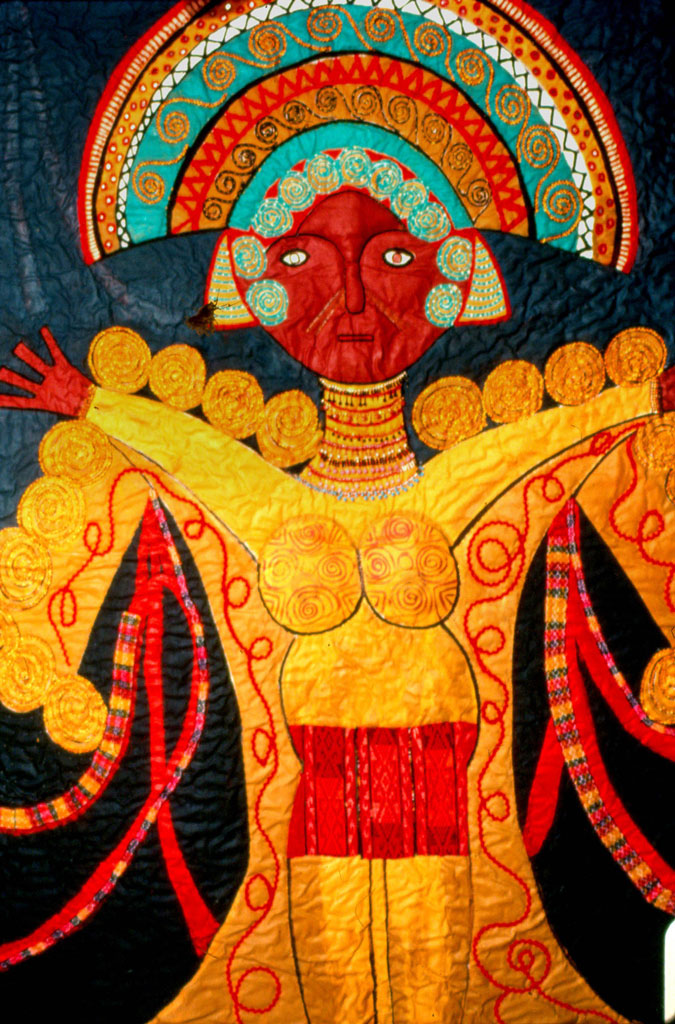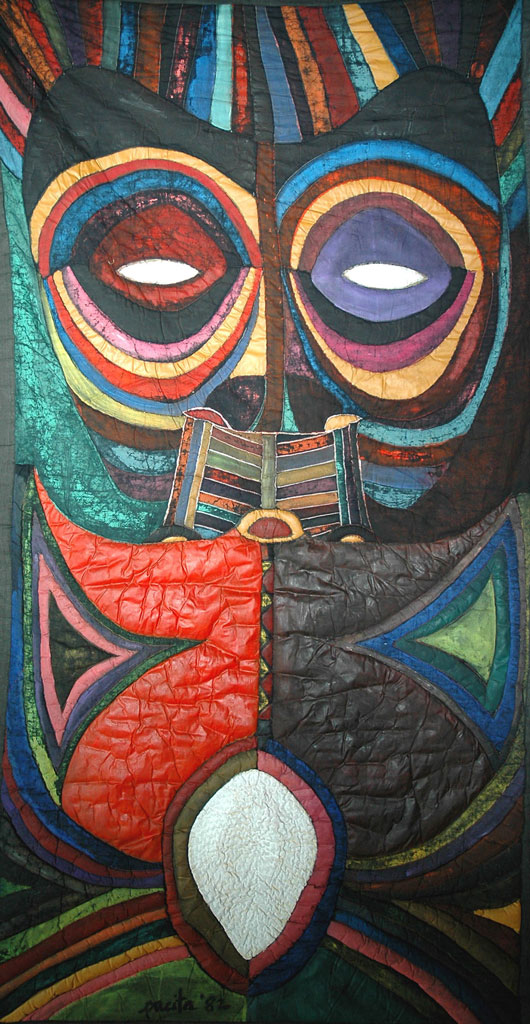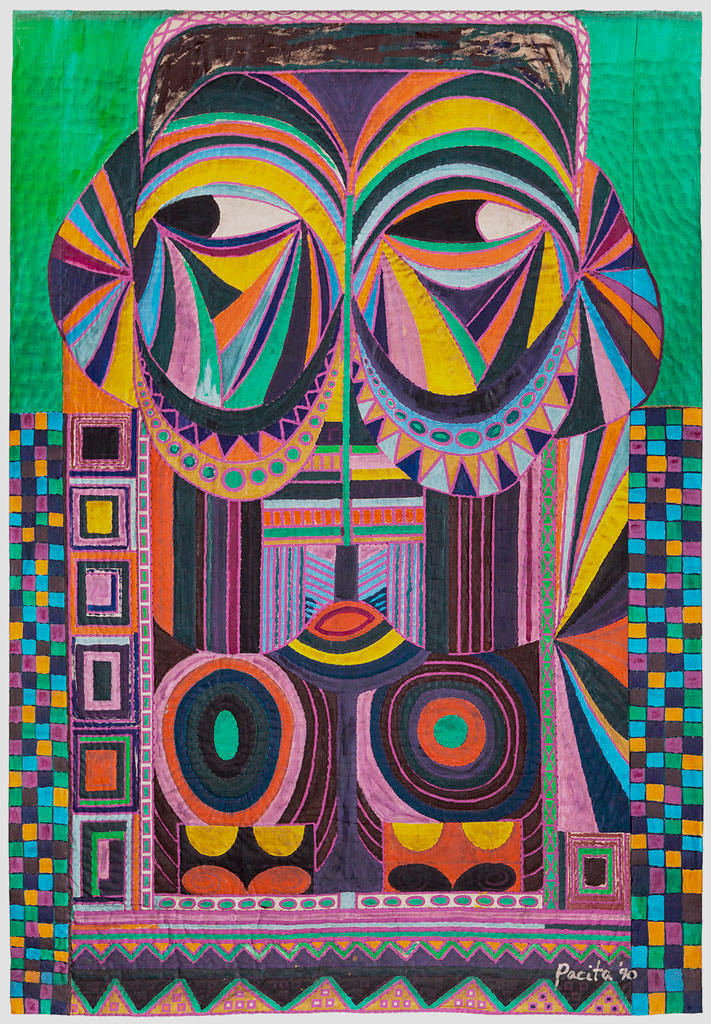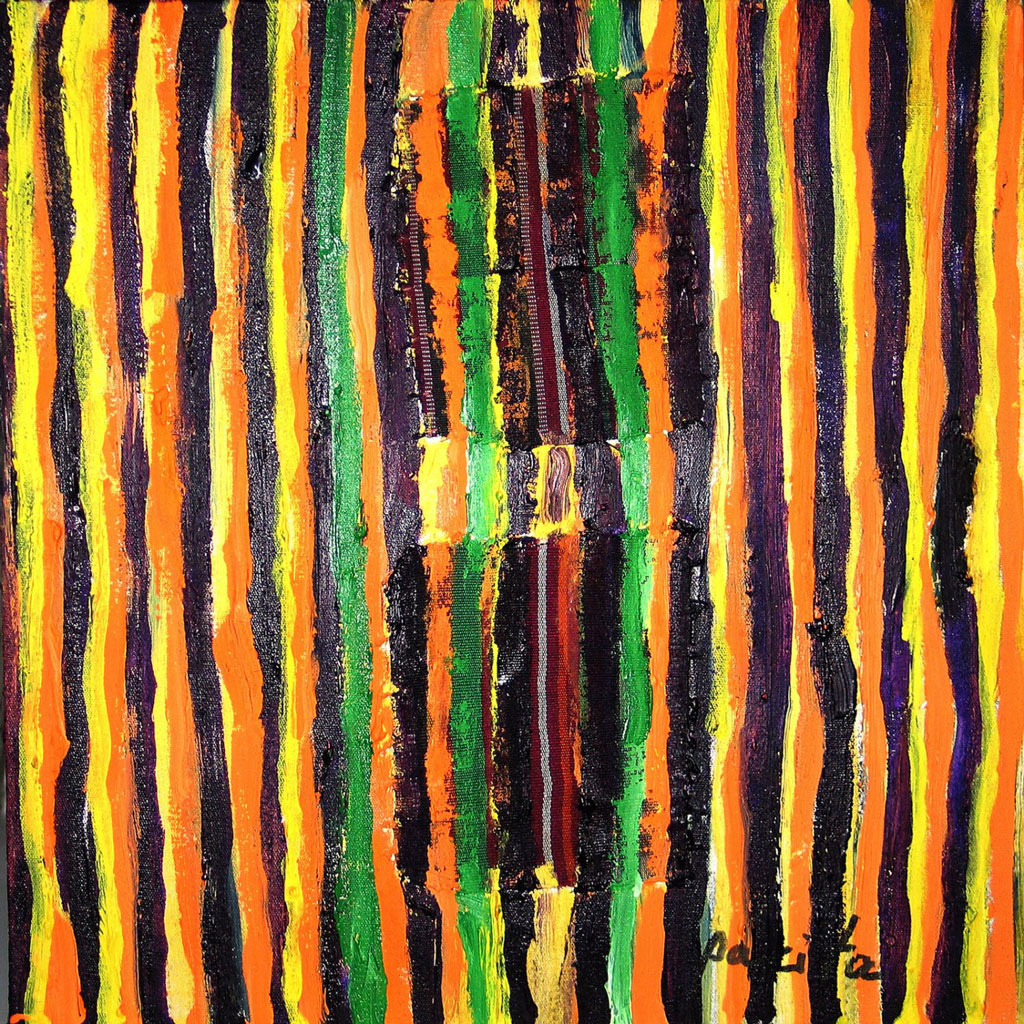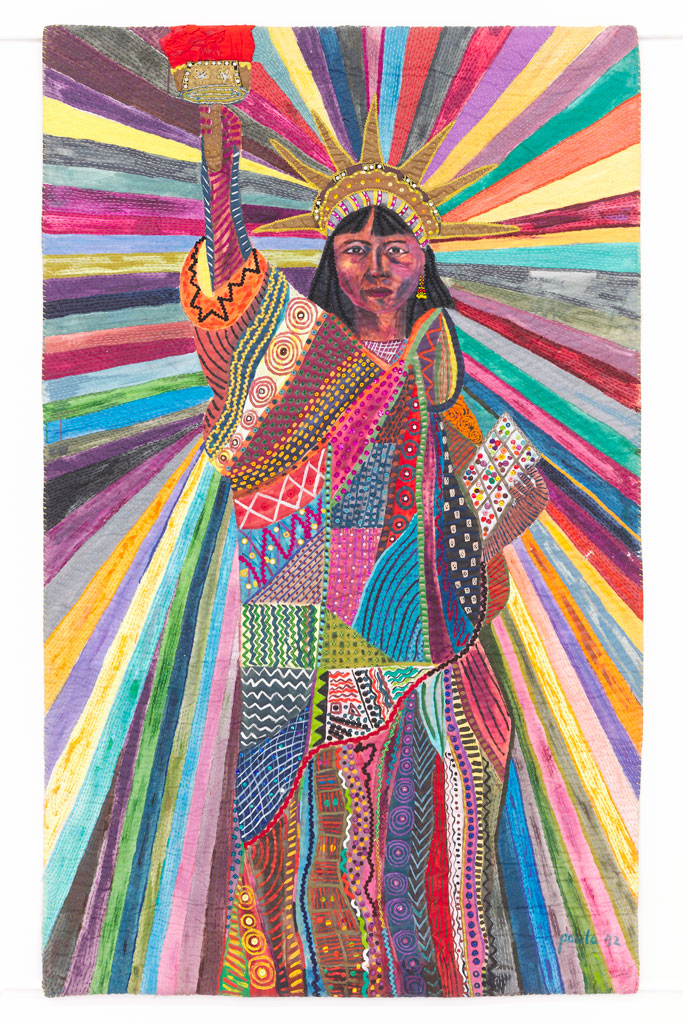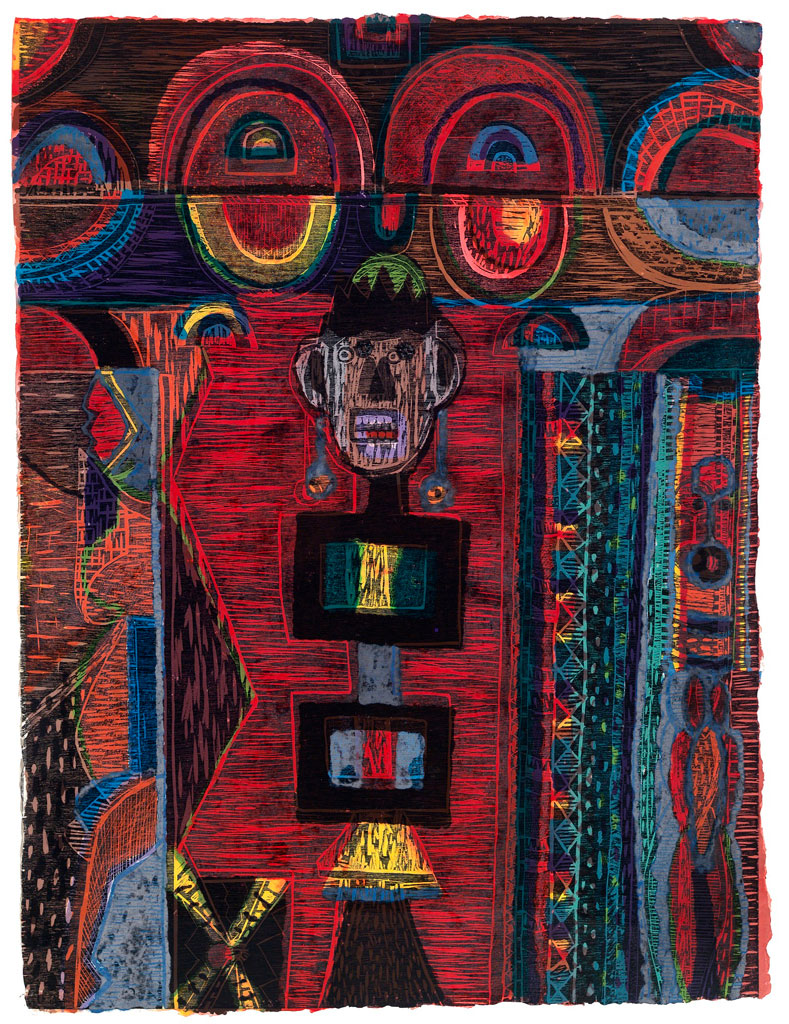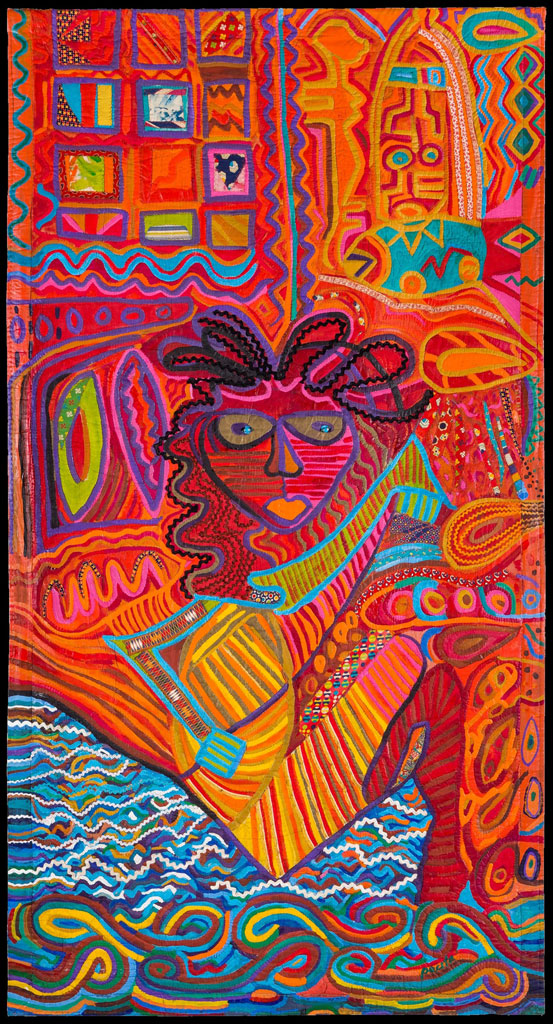ART-TRIBUTE:Weaving and other Practices… Pacita Abad
 We continue our Tribute with Pacita Abad (5/10/1946-7/12/2004) one of the few artists who successfully merged traditional textiles with contemporary painting. Like her signature combinations of vibrant colors, Pacita’s incorporation of a complete range of collaged textiles from gauze and burlap to batik and woven ikat cloth, blend seamlessly in her artworks.
We continue our Tribute with Pacita Abad (5/10/1946-7/12/2004) one of the few artists who successfully merged traditional textiles with contemporary painting. Like her signature combinations of vibrant colors, Pacita’s incorporation of a complete range of collaged textiles from gauze and burlap to batik and woven ikat cloth, blend seamlessly in her artworks.
By Dimitris Lempesis
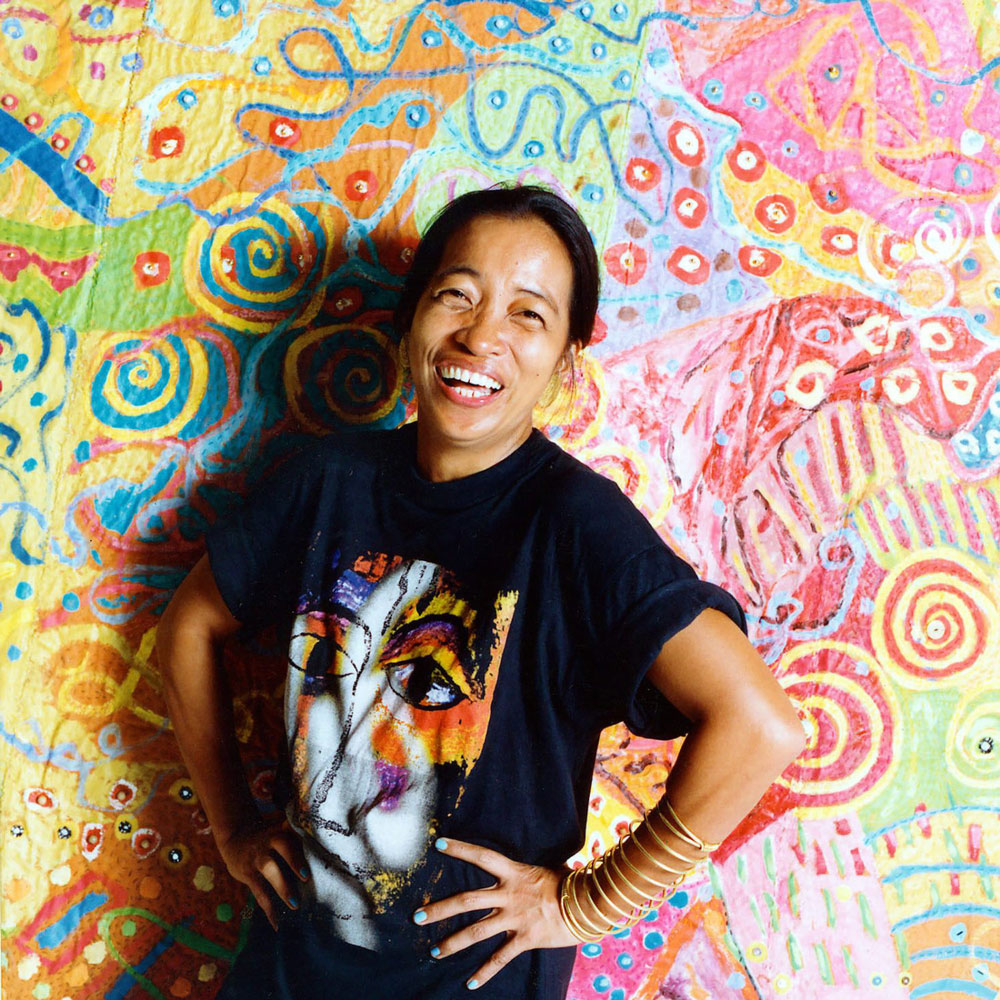 Pacita Abad was born on Batanes, a small island in the in the northernmost part of the Philippines. Abad earned a BA in political science at the University of the Philippines Diliman in 1967. Her 32-year painting career began when she had to leave the Philippines in 1969 due to her student political activism against the dictatorship of Ferdinand Marcos, and traveled to the United States to study law. However, a few years after receiving a Master of Arts degree in Asian History from the University of San Francisco she switched careers to dedicate her life to art. She then studied painting at the Corcoran School of Art, Washington, DC and the Art Students League in New York City. Pacita Abad was one of the few artists who successfully merged traditional textiles with contemporary painting. Like her signature combinations of vibrant colors, Pacita’s incorporation of a complete range of collaged textiles from gauze and burlap to batik and woven ikat cloth, blend seamlessly in her artwork. At times the textiles dominate Pacita’s textile collages, but in the vast majority of the paintings the textiles in the hand-stitched and painted canvases play a complementary role to Pacita’s emotions and color. Pacita’s textile collages were mostly created during the period between 1995 and 2003, and although many of the works are large, only one work, “100 Years of Freedom”, celebrating Philippine independence, is monumental, whereas a number of her trapunto pieces are. Nevertheless, using rich oils more than acrylics has also added to the difference in surface textures, though in the textile collages the surfaces are also enhanced by Pacita’s clever use of cloth strips and cut-up canvas collaged and sewn on her artwork. The five series (Endless Blues, Emotional Rescue, Door to Life, The Sky is the Limit and Sumba to Sulu) that make up Pacita’s textile collages were done during different periods and were inspired by her travels, both physical and emotional. From “Sumba to Sulu” was based on Pacita’s extensive journeys around the Indonesian archipelago from 1993 to 2000. She was impressed by many things that she saw, but especially by the beautiful textiles from different islands. Along the way she collected ikat from Sumba, batik from Java, bark cloth from Papua, ulos and songket from Sumatra, and Dayak weavings from Kalimantan. When she returned to her studio, Pacita sewed them on to her canvases and incorporated the cloth into her paintings. “Doors to Life” was inspired by her travels to Yemen in 1998 and resulted in a series of smaller paintings that used her textile collage technique. Similarly, the textile collages from her “The Sky is the Limit” series were created after Pacita’s last few trips to India, particularly Rajasthan, in 2000 and 2002. “Emotional Rescue” and “Endless Blues” were based on psychological and emotional journeys in her mind and body, as she wrestled with the sense of uncertainty about her cancer and mortality.
Pacita Abad was born on Batanes, a small island in the in the northernmost part of the Philippines. Abad earned a BA in political science at the University of the Philippines Diliman in 1967. Her 32-year painting career began when she had to leave the Philippines in 1969 due to her student political activism against the dictatorship of Ferdinand Marcos, and traveled to the United States to study law. However, a few years after receiving a Master of Arts degree in Asian History from the University of San Francisco she switched careers to dedicate her life to art. She then studied painting at the Corcoran School of Art, Washington, DC and the Art Students League in New York City. Pacita Abad was one of the few artists who successfully merged traditional textiles with contemporary painting. Like her signature combinations of vibrant colors, Pacita’s incorporation of a complete range of collaged textiles from gauze and burlap to batik and woven ikat cloth, blend seamlessly in her artwork. At times the textiles dominate Pacita’s textile collages, but in the vast majority of the paintings the textiles in the hand-stitched and painted canvases play a complementary role to Pacita’s emotions and color. Pacita’s textile collages were mostly created during the period between 1995 and 2003, and although many of the works are large, only one work, “100 Years of Freedom”, celebrating Philippine independence, is monumental, whereas a number of her trapunto pieces are. Nevertheless, using rich oils more than acrylics has also added to the difference in surface textures, though in the textile collages the surfaces are also enhanced by Pacita’s clever use of cloth strips and cut-up canvas collaged and sewn on her artwork. The five series (Endless Blues, Emotional Rescue, Door to Life, The Sky is the Limit and Sumba to Sulu) that make up Pacita’s textile collages were done during different periods and were inspired by her travels, both physical and emotional. From “Sumba to Sulu” was based on Pacita’s extensive journeys around the Indonesian archipelago from 1993 to 2000. She was impressed by many things that she saw, but especially by the beautiful textiles from different islands. Along the way she collected ikat from Sumba, batik from Java, bark cloth from Papua, ulos and songket from Sumatra, and Dayak weavings from Kalimantan. When she returned to her studio, Pacita sewed them on to her canvases and incorporated the cloth into her paintings. “Doors to Life” was inspired by her travels to Yemen in 1998 and resulted in a series of smaller paintings that used her textile collage technique. Similarly, the textile collages from her “The Sky is the Limit” series were created after Pacita’s last few trips to India, particularly Rajasthan, in 2000 and 2002. “Emotional Rescue” and “Endless Blues” were based on psychological and emotional journeys in her mind and body, as she wrestled with the sense of uncertainty about her cancer and mortality.
